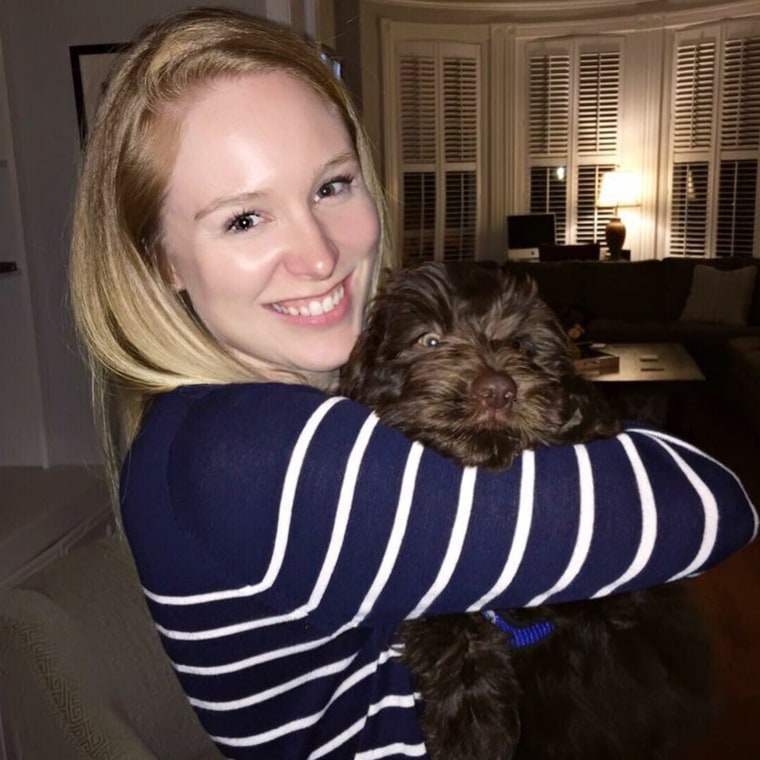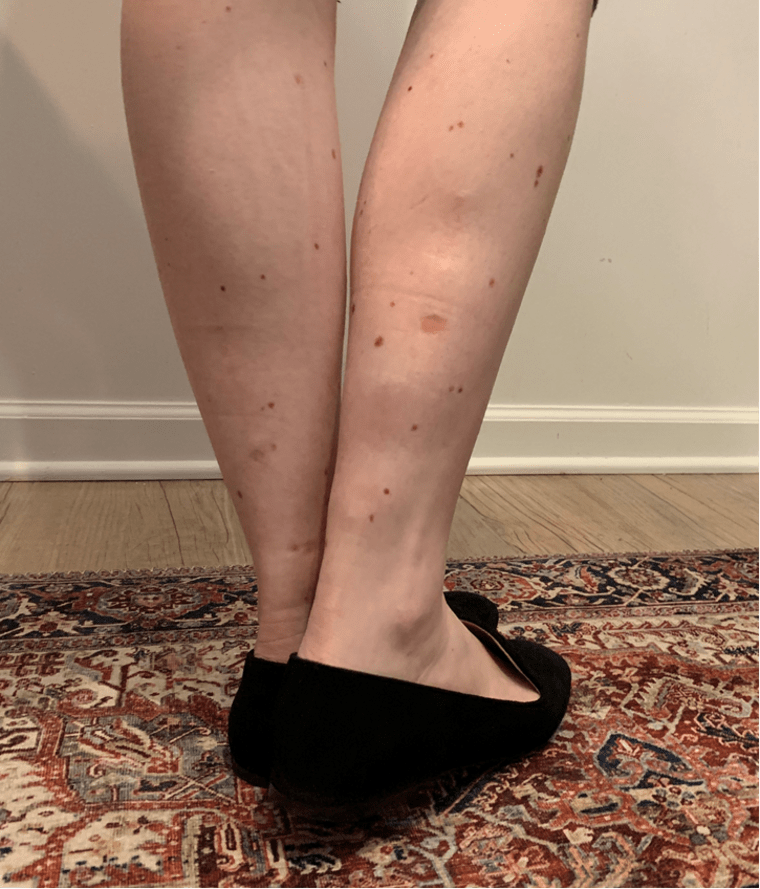Elizabeth Hazuka didn’t even notice the spot on her right lower calf when a dermatologist pointed it out during a skin check.
The dark brown, round mole was about the size of a pencil eraser, but Hazuka had other moles that looked similar. Still, when the doctor peered at it closely through a dermatoscope — a special magnifier with a light — it seemed different than the other spots.
When the biopsy results came back, the mole turned out to be the deadliest form of skin cancer.

“It didn’t look like a melanoma, which is kind of scary,” Hazuka, 32, a medical assistant in Washington, D.C. told TODAY.
“It was a life-altering moment. It was really like a gut punch. Being faced with death at such a young age really puts a lot into perspective.”
But it wasn’t the end of her ordeal: Hazuka was diagnosed with melanoma twice before turning 30. Melanoma is the second most common form of cancer in girls and women 15-29 years old, according to the American Academy of Dermatology.
That first spot, removed with a large margin because it had spread, was discovered when Hazuka was 25. It left her with a 6-inch scar on her leg.

Hazuka began to have skin cancer screenings every three months. She also received full-body photography that mapped all of her moles, and that’s how doctors found the second melanoma when she was 27. That spot was located a few inches up from the first one on her right calf. It was also removed, but hadn’t spread so the procedure left a smaller scar.
She’s grateful both spots were caught early, which means a 98% cure rate after five years.
Hazuka has fair skin, green eyes, light hair and many moles — all risk factors for skin cancer — but no family history of melanoma.
She grew up in Colorado where high altitudes mean the region has a high UV index — a measure of the strength of the sun’s rays in a particular place. She remembers getting “some pretty bad sunburns” as a child and she sought out more opportunities to be bronze as a teen.
“There was such a pressure to be tan and to be in the sun,” Hazuka said. “It really made me regret wanting to change the way I looked when I was a teenager. You want to fit in and you want to look like everybody else, but it’s not worth it.”
Hazuka now gets skin checks every six months and said the full-body photos of her moles give her peace of mind that if another cancer were to develop, doctors would catch it early.
Full-body photography is gaining traction, but it’s expensive and requires a special setup in order be done correctly, so it’s typically reserved for high-risk patients, said Dr. Adam Friedman, professor and interim chair of dermatology at the George Washington School of Medicine and Health Sciences in Washington, D.C.
As the technology becomes more accessible, it could be something everyone does, he noted.
He called the dermatoscope — the instrument that helped detect Hazuka’s first mole — a great tool to assist doctors in deciding whether a lesion is concerning or not.
“It’s all about pattern recognition — using polarized light, we can see how the pigment, blood vessels or even the skin is arranged and based on that pattern, we can make a better judgement as to what it could be,” said Friedman, who is Hazuka’s boss but not her personal dermatologist.
“We don’t want to cut out every little ditzel as that is not fair to the patient nor good medicine. This tool enables us to be better diagnosticians.”

Meanwhile, Hazuka has become “a sunscreen fanatic,” covers up as much as possible and uses wide-brimmed hats when she spends time outside.
The health scares motivated her to change her career and become a medical assistant. She will be applying to physician assistant school this summer.
“Going through this has taught me you have to take your own health into your own hands and that life is precious,” she said. “Getting skin checks is so important, especially if you’ve had a lot of sun exposure in your youth. That’s when the damage is done.”

